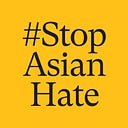How the ‘Forever Foreigner’ Stereotype Unifies the Asian American Experience
Despite the diversity of national origins, language, religion, and histories, all Asian Americans have faced exclusion
By Sara Sadhwani, Janelle Wong, Jennifer Lee, and Karthick Ramakrishnan
Racial animosity towards Asian Americans is not new. Prior to the murder of six Asian American women in Atlanta, tension and animosity had been building egged on by the former president who insisted on blaming Asian Americans for the coronavirus pandemic. But the history of anti-Asian bigotry, discrimination and violence in America dates back more than 150 years. Well before the civil rights movements of the 1960s, Asian Americans were bound together by their exclusion from free migration, from whiteness, and from U.S. citizenship.
Over the course of U.S. history, government policies have consistently reduced the status of Asian immigrants to a state of conditional belonging. It started with restrictions on Chinese immigrants in California right after statehood in 1850, which expanded to national laws barring the entry of Chinese women under the 1875 Page Act, and Chinese immigrants more generally under the 1882 Chinese Exclusion Act. Immigrant exclusion was not limited only to China, however. As Japanese immigrants became more numerous, the United States signed a Gentleman’s Agreement with Japan in 1906 that reduced the migration of immigrant men, and by 1917, Congress had passed a sweeping Immigration Act that created an Asiatic Barred Zone, stretching from Korea to British India.
Officially sanctioned Asian American exclusion went beyond restrictions on immigration. After 1870, when Congress amended the Naturalization Act to be “extended to aliens of African nativity and to persons of African descent,” Asians were the only major immigrant group denied U.S. citizenship.This racial exclusion from naturalization was upheld in two key Supreme Court cases: Ozawa v. U.S. (1922) and Thind v. U.S. (1923). The civil rights of Asian American citizens and permanent residents have also been under periodic threat, from the incarceration of Japanese Americans during World War II, to hate crimes and civil rights violations targeted at South Asians for over a decade following the attacks on September 11th.
Anti-Asian violence has a long history as well. In 1999, Filipino American mail carrier Joseph Illeto was gunned down by a white supremist in Southern California, and in 2012 a known white supremist entered a Sikh gurdwara slaughtering six congregants in Oak Creek, Wisconsin. Sometimes, such attacks are fueled by negative political rhetoric toward Asia, such as the brutal 1982 murder of Chinese American Vincent Chin by disaffected Detroit autoworkers who blamed Chin for the success of Japan’s auto industry amidst a national recession.
While diversity and difference in national origins, language, religion, and histories are among the most striking features of the Asian American population, the experience of racialization and the vulnerability of non-White status binds disparate groups within the Asian American category. When one segment of the community is targeted, hostilities toward Asians spill over to other segments, as does fear about racialized violence. This became painfully clear when less than a month after the shooting in Atlanta, four Sikh Americans were killed among eight victims by a gunman who visited white supremacist websites, according to law enforcement reports.
In the summer of 2020, concern about pandemic-related backlash reverberated across Asian American groups. While Trump blamed China for the coronavirus, Indian Americans — perhaps because of their intimate knowledge of racial backlash after 9/11 — were the Asian group most likely to say they worried about experiencing hate crimes, harrassment, and discrimination due to COVID-19 “very often” or “somewhat often.”
Shared experiences with racialization are also reflected in more recent data from an AAPI Data|Survey Monkey poll fielded March 18–26, 2021, just two days after the shootings in Atlanta. The survey included a sample of 16,336 adults ages 18 and over, including 1,831 Asian Americans and 186 Native Hawaiian or Pacific Islanders living in the United States. (Separate analysis that focuses on Native Hawaiian and Pacific Islanders is forthcoming from AAPI Data)
For example, the majority of Asian American respondents — regardless of nativity — reported having people ask “where are you from,” with the assumption of not being from the U.S. This includes 67% of East Asians, 62% South Asians, and 62% of Southeast Asians.
Being asked, “where are you really from” is one of the hallmarks of conditional status and othering. Baked into the question is the assumption that because of one’s perceived race, their homeland must be somewhere other than the United States, that one cannot possibly be from here, and, in times of crises, that one does not belong here. Similarly, many respondents reported being treated as if they don’t speak English. This was particularly acute for Chinese Americans (46%) and other East Asians (44%), but also high among Southeast Asians (41%) and South Asians (38%). Here, it is important to add that the survey was conducted in English only, so all respondents demonstrated proficiency in English.
When asked if they had ever been a victim of a hate crime or incident, 27% of all Asian Americans in the survey said yes, including 32% of East Asians. Fewer, but still a significant proportion of South (23%) and Southeast Asians (25%) said they too had been victims of hate crimes or incidents in the past.
In the wake of COVID-19, all Asian American groups expressed fear about being the victim of a hate crime, but the fear is heightened among East Asians, and especially among Chinese Americans: 72% of Chinese Americans said that they worry about becoming the next victim of a hate crime sometimes, often or all of the time. The fear is also very high among Southeast and South Asians, 68% and 58% of whom respectively, share the same concern; they too recognize that they are not immune given the marked increase in white nationalism, nativism, and xenophobia in recent years that threatens all Asian Americans.
Given a rise in white nationalist hate groups over the past half-decade, the survey also shows that Asian Americans are not alone in their experiences with or anxiety related to hate crimes. Black respondents report the highest levels of experience with hate crimes overall and the highest levels of worry about being the victims of such incidents. Latinx people report similar levels of experiences with hate crimes as Asian Americans. And, when it comes to housing, policing and educational discrimination, Black, Latinx, Native American, and Pacific Islander Americans report higher levels of discrimination than Asian Americans of any regional-origin. This is not to suggest that unfair obstacles to education and housing do not exist for some Asian American groups. Southeast Asian Americans, for example, confront unique barriers to educational attainment and economic stability.
While the targeting of Asian Americans has become painfully acute in the past year during the pandemic, bigotry, discrimination, and violence persistently plague all minoritized groups. The widespread and different forms that racial discrimination take on in our society are a reminder that fighting anti-Asian hate cannot be divorced from fighting racism in all its forms.
The authors are all senior researchers at AAPI Data. Contact information and bios here

